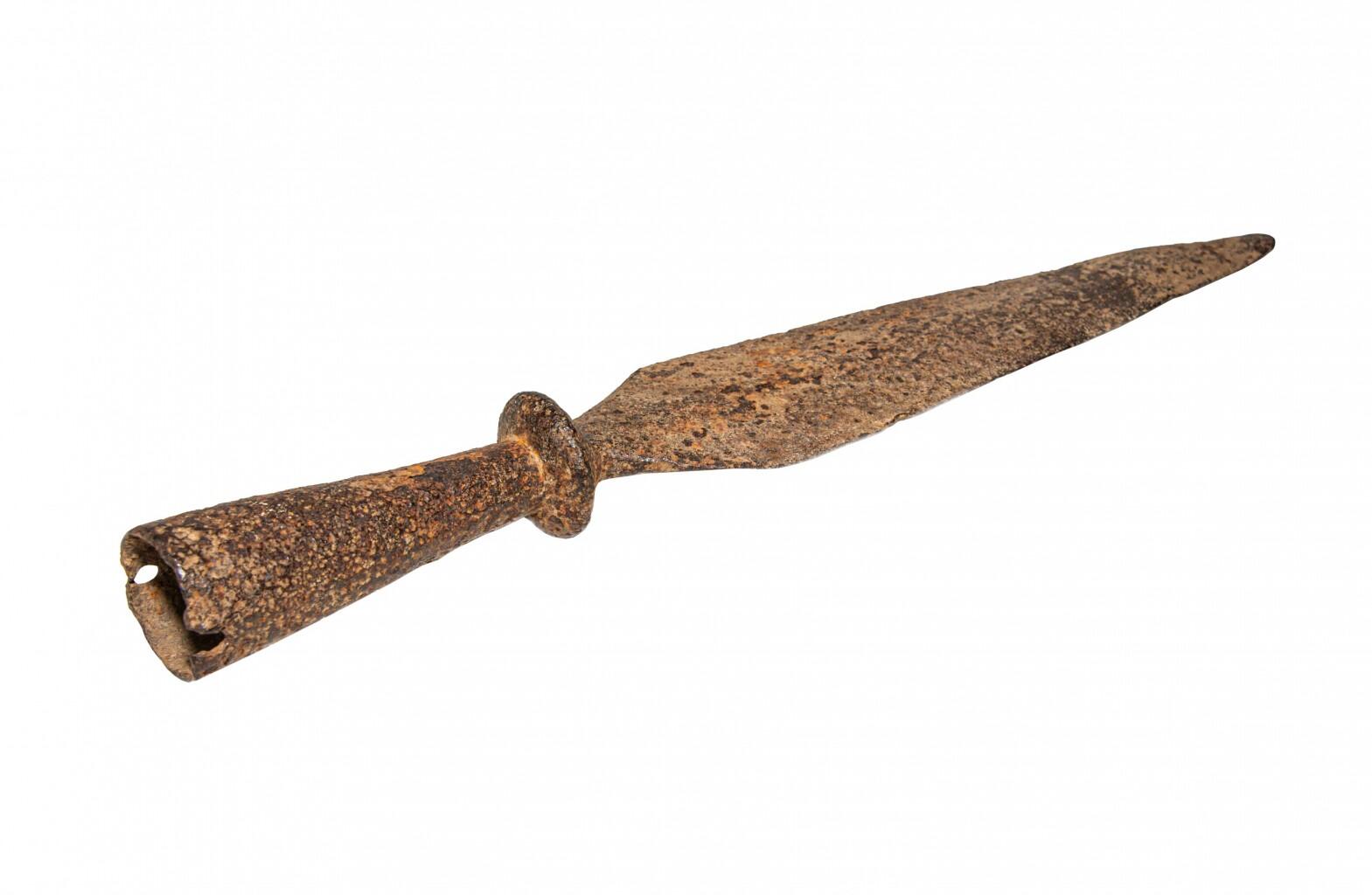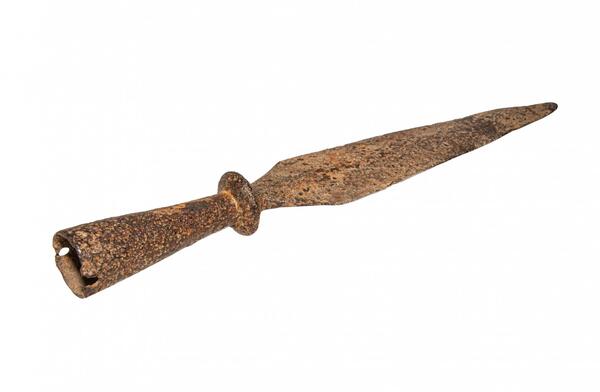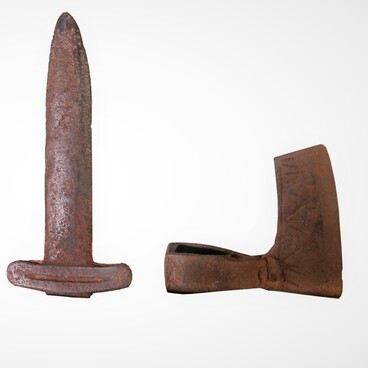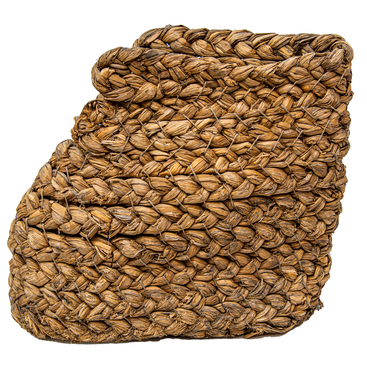Pole-arms are one of the most ancient tools. The first type was a simple spear, which at first was a stick sharpened at the end. Such spears appeared in the Paleolithic times.
Any spear consisted of a shaft (ratovishche) and a head. The shaft was made of wood, it could be of different sizes. The head was usually forged from metal. Initially, it was simply tied to the outside of the shaft, but later the method of fastening became much more complicated.
The head consisted of the blade, the aula — a tube into which the shaft was inserted — and the stem, which was between the tube and the blade. Sometimes the shaft was shackled at its lower end with iron. The head was put on the shaft, and for its additional fixation small nails, rope or strips of leather were used. There was another way to attach the head: it could simply be hammered into the shaft.
The museum exhibit houses the variants of the most common type of spear with a relatively wide head (vane) of an elongated triangular shape. Spears of this group were found everywhere — not only in the territory of modern Russia, but also in other parts of the world.
The length of such spears varied greatly. It ranged from 1.5 to 7 meters. Especially long spears were the weapons of infantrymen: they were used both against the enemy’s foot ranks and as a defense against enemy cavalry. Such types of spears could only be used in close formation.
The most famous infantry spear of the Middle Ages is the pike. Its length could reach 5-6 meters, and the total weight could reach 4-5 kilograms. When stirrups appeared in the horse harness, heavy cavalry became the main striking force of any army. Because of the need to reliably protect the infantry from it, the infantry pike appeared. A close formation of pikemen soldiers could stop any attack of the enemy’s cavalry. However, the pikes had no counterweight, so great physical strength was required to hold this weapon. Pikes were not used to strike — they were pointed in the direction of the enemy during an attack.
In the later period, pikemen became an additional protection for musketeers, fighters who were armed with muskets and swords. The heavy pike began to lose its combat value when mobile artillery appeared on the battlefields in around the 17th century. At first, it was replaced by a light pike up to three meters long, and then this type of weapon was completely replaced by bayonets.
Any spear consisted of a shaft (ratovishche) and a head. The shaft was made of wood, it could be of different sizes. The head was usually forged from metal. Initially, it was simply tied to the outside of the shaft, but later the method of fastening became much more complicated.
The head consisted of the blade, the aula — a tube into which the shaft was inserted — and the stem, which was between the tube and the blade. Sometimes the shaft was shackled at its lower end with iron. The head was put on the shaft, and for its additional fixation small nails, rope or strips of leather were used. There was another way to attach the head: it could simply be hammered into the shaft.
The museum exhibit houses the variants of the most common type of spear with a relatively wide head (vane) of an elongated triangular shape. Spears of this group were found everywhere — not only in the territory of modern Russia, but also in other parts of the world.
The length of such spears varied greatly. It ranged from 1.5 to 7 meters. Especially long spears were the weapons of infantrymen: they were used both against the enemy’s foot ranks and as a defense against enemy cavalry. Such types of spears could only be used in close formation.
The most famous infantry spear of the Middle Ages is the pike. Its length could reach 5-6 meters, and the total weight could reach 4-5 kilograms. When stirrups appeared in the horse harness, heavy cavalry became the main striking force of any army. Because of the need to reliably protect the infantry from it, the infantry pike appeared. A close formation of pikemen soldiers could stop any attack of the enemy’s cavalry. However, the pikes had no counterweight, so great physical strength was required to hold this weapon. Pikes were not used to strike — they were pointed in the direction of the enemy during an attack.
In the later period, pikemen became an additional protection for musketeers, fighters who were armed with muskets and swords. The heavy pike began to lose its combat value when mobile artillery appeared on the battlefields in around the 17th century. At first, it was replaced by a light pike up to three meters long, and then this type of weapon was completely replaced by bayonets.



